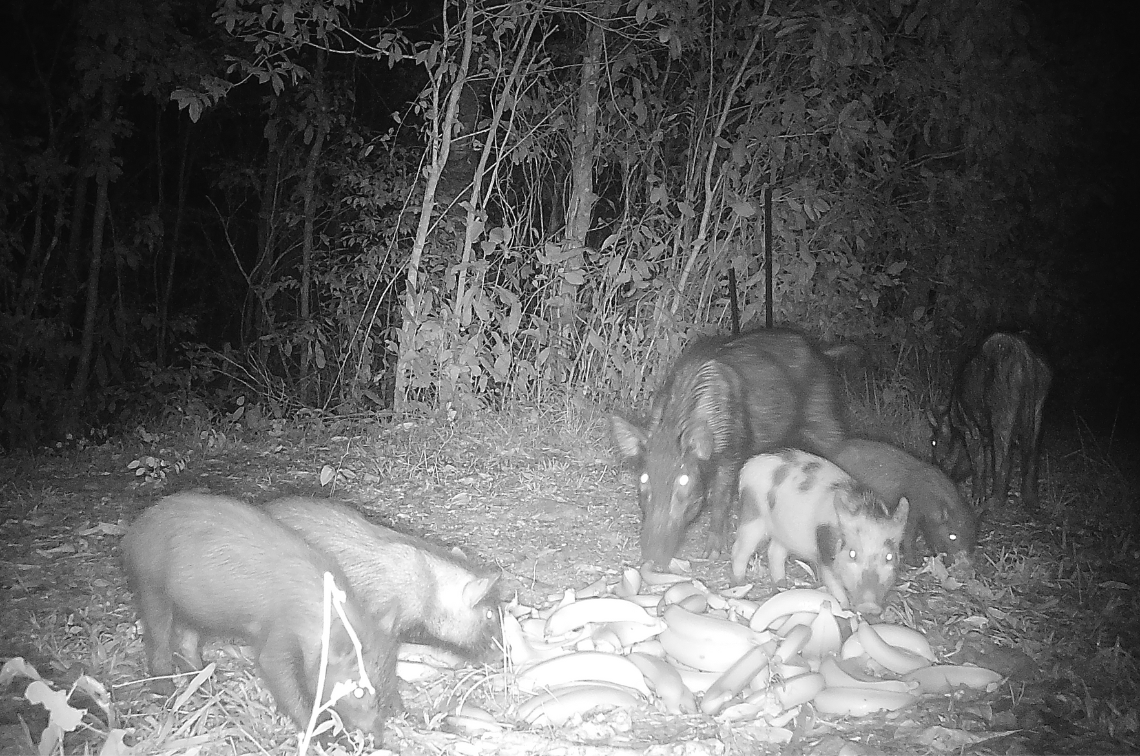In northern Australia, feral ungulates (hoofed animals), especially pigs, buffalo, and cattle, cause damage to the environment and are vectors for disease. Indigenous Land and Sea Managers oversee control programs, but intermittent and insufficient funding limits the consistency and success of efforts.
There is currently no effective framework that enables Indigenous organisations to lead or participate meaningfully in regional planning for feral animal control. Yet these organisations manage vast areas of land, often with deep cultural obligations and complex governance arrangements. To effectively support leadership in feral animal management by Indigenous organisations in Northern Australia’s land and sea management sector, it is important to understand cultural obligations, organisational structures, local capacity, legal rights and interests and environmental constraints that shape their operational contexts.
This Indigenous-led project worked with Indigenous land and sea management organisations to understand what is needed to establish effective, Indigenous-led control programs. It focused on governance, skills, tenure, and cultural values. Using surveys, regional mapping, and three case studies (from Cape York, the Gulf of Carpentaria, and Arnhem Land), the project documented how Traditional Owners are managing feral ungulates and the barriers they face. The results informed a conceptual model for supporting Indigenous-led feral animal management.
Approach and findings
The project combined desktop spatial analysis, workshops, surveys, and interviews with Indigenous land and sea management organisations. In collaboration with the Indigenous Carbon Industry Network (ICIN), the team mapped Indigenous rights and tenure across Australia, finding that Indigenous people hold varying legal interests in 52% of Australia’s land and 82% of the conservation estate.
Three case studies of Indigenous land and sea management organisations (Aak Puul Ngantam, Carpentaria Land Council Aboriginal Corporation, and Mimal Land Management) revealed region-specific challenges and opportunities. Surveys from 11 Indigenous organisations showed that ranger groups are already undertaking feral animal control, but with inconsistent funding, training gaps, and under-resourced data systems.
This project has highlighted some fundamental gaps in the resourcing and governance of regional feral animal management. It has also exposed a significant workforce with deep local knowledge, who are well-trained, underutilised, and only peripherally involved in formal state-based regional coordination.
The findings emphasised the importance of local governance and Traditional Owner decision-making. Cultural boundaries, not just legal tenure, must guide regional planning. Feral animal programs must reflect community priorities, support long-term data management, and offer flexible, on-Country training options.
Outcomes
-
Foundational knowledge and practical insights to inform investment and support Indigenous-led feral animal management in northern Australia and the future participation of Indigenous land and sea management organisations in biodiversity and carbon markets.
-
A conceptual model for Indigenous-led feral animal management, shaped by local governance and cultural priorities.
-
A mapped overview of Indigenous rights and land tenure across northern Australia.
-
Detailed case studies showing how Indigenous groups are managing feral animal impacts and identifying tenure, infrastructure and governance needs.
-
Increased awareness of Indigenous capacity and leadership in addressing feral animal impacts.
Project location
Project leader
Research partners
North Australian Indigenous Land and Sea Management Alliance
Collaborators
Indigenous Carbon Industry Network
Research users
Department of Climate Change, Energy, the Environment and Water
Parks Australia
Technical report – Project 3.9
Indigenous-led feral animal management in northern Australia
Perry J (2024). Indigenous-led feral animal management in northern Australia. Report to the Reef and Rainforest Research Centre, Cairns, Queensland.
Other – Project 3.9
Establishing Indigenous-led feral-ungulate control in northern Australia Community Poster
NESP Marine and Coastal Hub (2024). Establishing Indigenous-led feral-ungulate control in northern Australia Community Poster. Project 3.9 Community poster. Reef and Rainforest Research Centre, Cairns, Queensland.
Fact sheet – Project 3.9
Project 3.9 Information sheet
NESP Marine and Coastal Hub (2023). Establishing Indigenous-led feral-ungulate control in northern Australia. Project 3.9 Information sheet. Reef and Rainforest Research Centre, Cairns, Queensland.




